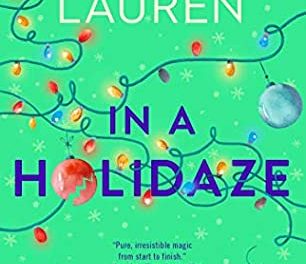
Quakeland by Kathryn Miles
Published by Dutton on August 2017Genres: Non-Fiction
Pages: 368
Source: Publisher
Buy on Amazon Goodreads

Earthquakes. You need to worry about them only if you're in San Francisco, right? Wrong. We have been making enormous changes to subterranean America, and Mother Earth, as always, has been making some of her own. . . . The consequences for our real estate, our civil engineering, and our communities will be huge because they will include earthquakes most of us do not expect and cannot imagine--at least not without reading Quakeland. Kathryn Miles descends into mines in the Northwest, dissects Mississippi levee engineering studies, uncovers the horrific risks of an earthquake in the Northeast, and interviews the seismologists, structual engineers, and emergency managers around the country who are addressing this ground shaking threat.
As Miles relates, the era of human-induced earthquakes began in 1962 in Colorado after millions of gallons of chemical-weapon waste was pumped underground in the Rockies. More than 1,500 quakes over the following seven years resulted. The Department of Energy plans to dump spent nuclear rods in the same way. Evidence of fracking's seismological impact continues to mount. . . . Humans as well as fault lines built our "quakeland."
What will happen when Memphis, home of FedEx's 1.5-million-packages-a-day hub, goes offline as a result of an earthquake along the unstable Reelfoot Fault? FEMA has estimated that a modest 7.0 magnitude quake (twenty of these happen per year around the world) along the Wasatch Fault under Salt Lake City would put a $33 billion dent in our economy. When the Fukushima reactor melted down, tens of thousands were displaced. If New York's Indian Point nuclear power plant blows, ten million people will be displaced. How would that evacuation even begin?
Kathryn Miles' tour of our land is as fascinating and frightening as it is irresistibly compelling
Beginning in 1985, Yellowstone witnessed a swarm of seismic activity – over 3000 earthquakes in a three month period. That alone is pretty interesting. But what really got Smith’s attention was what happened just after…
Being from the East Coast originally, I’m used to thunderstorms. Tornadoes. Even the ill-pathed hurricane. But earthquakes? That pleasure wasn’t introduced to me until I moved to beautiful, hot, dry Los Angeles. I’ve felt tiny ones. I moved out here long after the famous 1994 Northridge quake.
I remember specifically being at work in Burbank, CA, years ago, to think that a group of children were running wild down the corridor only to find all of the hanging lights swaying. (The building was new and on wheels so it rocked with the earthquake.) Most of us were freaked out. Only a few went home. In any event, it was a small one, so small, and still it left a big impact.
That said, reading Quakeland instills that fear in my heart all over again. As Miles goes onto explain in detail, with mountains of support, the earth doesn’t move only by itself. We, humans, are changing the earth as well, causing more more more earthquakes in places that have never had earthquakes before. And it doesn’t look like we’re going to be stopping this behavior anytime soon.
Miles’s book goes into great detail supported by thorough research on the history of Earthquakes, speaking to experts from around the country. The beginning chapters on Yellowstone packs a hard punch by itself, so much so I’m sorta obsessed with the idea of Yellowstone, equally terrifying and awestruck. Every chapter was unique and held my attention, though towards the end of the book I have to admit the dark pit in my stomach was growing bigger and bigger as I read about fracking, and the threat of earthquakes along newly existing fault lines. (Hello Oklahoma)
Non-fiction books are usually hit or miss for me. I need it to be interesting enough to hold my attention, give me facts and information in a compelling way without it feeling like a data dumb. Quakeland does this well, showcasing ideas and statistics in a story manner, allowing the reader to fully immerse themselves in the drama of the towns and people that were visited. It’s a book that, every paragraph or two, I would stop and re-read parts to my husband, my mounting anxiety getting bigger and bigger. (I stopped reading it before bed, and invested in my earthquake emergency kit while I was reading this book.)
Overall, Quakeland is well written and saturated with facts that I never knew, truths I never thought of, and terrifying possibilities that I’m only afraid to touch upon.
If you live near a fault line, you should this book. If you DON’T live near a fault line, you DEFINITELY need to read this book.



 Kimberly majored in Songwriting and currently works full time in the music industry. When she's not listening to music, knitting or writing, you can find her outside reading her favorite genres: Young Adult, Adult Fiction, Mystery, and Romance.
Kimberly majored in Songwriting and currently works full time in the music industry. When she's not listening to music, knitting or writing, you can find her outside reading her favorite genres: Young Adult, Adult Fiction, Mystery, and Romance.
The premise of this book looks so interesting! I too have a hit or miss situation with non-fiction books but this one looks fantastic! Awesome review 🙂
Thank you Lily! Thanks for reading. I couldn’t put it down! Especially the parts about Yellowstone. So scary!
Better get your earthquake kit ready!
Ahhh! I know! I just redid mine too!